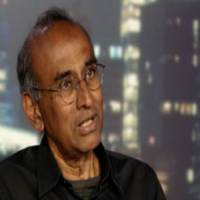
iStock(NEW YORK) — In normal times, Mammoth Lakes relies on tourists — skiers who fly into the 8,000-person California mountain town in the winter, and hikers and fishermen who flock there in the summer — for its livelihood.
Mammoth Lakes’ remote location, three hours from Reno, Nevada, and five hours from Los Angeles, is part of what makes the town a serene getaway. But with just one hospital, 17 beds and four ventilators, locals worry that they’re sitting ducks if, or more likely when, COVID-19 spreads here in earnest.
Fifteen patients so far have tested positive at Mammoth Hospital, three-quarters of whom have needed ventilators. While the hospital was able to transfer patients who needed higher-level care to partner hospitals, Thomas Parker, Mammoth’s CEO, worries about what will happen in a few weeks, when those partner hospitals inevitably fill up.
“They’re going to get saturated,” Parker warned. “That ability for us is going to go away pretty quickly.”
The United States’ response to the ongoing COVID-19 outbreak has largely focused on hotspots like New York City, where case counts and deaths have overshadowed clusters elsewhere in the country. And President Donald Trump has continued to downplay the threat to areas that haven’t seen a surge in cases, deferring to those states to impose stay-at-home orders.
But while it’s taking longer for the virus to spread in country or mountain towns, experts say that rural communities, which often rely on metropolitan hospitals as a safety net, are tinderboxes poised to ignite.
“All the rural guys look like they’re fine, but they’re not,” said Lynn Barr, the CEO of Caravan Health, a consulting group that advises rural hospitals and health clinics around the country. “If they don’t plan, it will devastate them,” she added.
“It’s like watching a car accident in slow motion. You can see where it ends.”
Hundreds of rural communities that used to have a hospital lost them in recent years. Ninety five rural hospitals closed between January 2010 and January 2019, according to the Department of Health and Human Services’s Federal Office of Rural Health Policy. What is especially pertinent now is that 32 of those were critical access hospitals, meaning they offered 24-hour emergency care services 7 days a week.
Research by the North Carolina Rural Health Research Program shows that 170 rural hospitals have closed since 2005, and that 2019 was the worst year since then, with 19 rural hospital closures across the country and three in Tennessee alone. The numbers underscore the fact that during the pandemic, thousands of Americans could have to travel dozens of miles for emergency and inpatient care.
“The effect of these rural hospital closures will be more acutely felt than they have in the past,” said George Pink, the program’s deputy director.
With aging populations, low government reimbursement rates, and high numbers of people still lacking insurance, rural hospitals have closed over the years because they simply could not afford to keep the lights on, Pink explained. Now they are facing tough choices about which surgeries merit attention during the COVID-19 crisis and even more rural hospitals could be in jeopardy of going bankrupt or running out of savings, just like other hospitals are around the country.
“Just as we need them most [in this pandemic], they are in a precarious financial positions,” Pink said. “There are hundreds of rural hospitals that have less than two weeks’ cash, and now they are cutting off elective surgeries to get ready for an influx of COVID-19 patients.” Elective surgery is their financial lifeline, he added.
“Some hospitals just cannot make payroll. Unless all of your staff are willing to work for nothing, that is the reality some of these hospitals could face,” he added.
Hospitals around the country share Mammoth Hospital’s worry about metropolitan hospitals filling up and being unable to admit rural residents who need intensive care or ventilators.
“Rural hospitals generally rely on transferring their patients,” Barr said.
The single hospital in Juneau, Alaska, provides health care to dozens of surrounding smaller communities, but also sometimes sends patients to bigger facilities in other cities.
“We medevac a lot of patients and that’s another concern, if we do get a surge of sick patients and Seattle or Anchorage are overwhelmed, too, will they be accepting patients?” Annie Nelson, an emergency department nurse at the Bartlett Regional Hospital in Juneau told ABC News.
In overflowing city hospitals, doctors on the frontline are already talking about battlefield-style triage. When there aren’t enough ventilators to go around, doctors will have to rely on policy to decide who gets life-saving treatment. Frequently, such policies prioritize health care workers, first responders and younger and healthier people at the expense of the old and sick.
It’s a devastating burden for any health care provider to be tasked with and for rural providers there’s an added wrinkle: doctors will likely be forced to choose between patients they know personally.
“I have this deep, emotional feeling about what it’s going to be like when we’re sitting there with seven patients who need a vent, and we only have three vents, and we know every one of those patients,” Barr said.
“It’s your kids’ school teacher,” she said. “Triage was never intended for people you know.”
For Americans in rural communities, traveling long distances to doctors or hospitals were major barriers to care before COVID-19. Faced with a contagious virus ravaging that’s ravaging communities, many families have not been able to stay with patients who were sickened by COVID-19, while they get care.
“If you are elderly or poor or disabled, or you live 25 or 30 miles away, having family visit or accompany you to a hospital could be a big barrier,” Pink said. “The sense of isolation is going to be much worse for older and sicker patients in rural areas.”
Rural patients may face logistical challenges getting care in the first place, explained Courtney Gidengil, a senior physician policy researcher at RAND and lead author of a 2018 report on the United States’ response to the Ebola outbreak.
“It depends on how robust the infrastructure is in some of these places,” Gidengil said. “You need EMS to be able to come to you and bring you to a hospital. You need the hospital to not get overwhelmed and then you need expertise within hospitals.”
Testing in rural areas could be harder logistically, Pink noted. Other major factors include whether ambulances are driven by volunteers or staff and whether the nearest hospitals have fully functioning special services or whether they regularly rely on bigger hospitals. In the rural communities Barr works with, it’s not unusual for EMS and fire departments to be made up of volunteers.
“How trained are these people?” she asked. “If there’s a surge, how do you handle that surge with no EMS capacity?”
Rural communities may be farther from medical centers and it may be harder to get to them, Gidengil explained. In addition to supply shortages, many rural communities have shortages of specialists.
“So far, we’ve seen the middle of the country relatively spared compared to the more populated coasts, but I think that is likely to change,” she said.
“There’s no reason to think that it’s not possible that COVID will hit them as well.”
In addition to health care access obstacles, rural populations tend to be older and to have morbidities, like smoking, hypertension and obesity, which can be risk factors for severe and fatal cases of COVID-19, Gidengil noted.
“We’re still learning about the disease, but it seems like those types of comorbidities and age together really put people at risk.”
In the 10,000-person town in rural Nevada where Barr lives, there are no delivery services — no Uber Eats, no DoorDash, no Amazon — which have been crucial in allowing social distancing in urban and suburban areas. Barr’s lucky. Her town has a grocery store. Many of the rural communities she’s visited across the country don’t.
“We’ve been fundraising in our community to subsidize delivery of food to seniors, so that they can shelter in place,” she said. “If we can’t get anything delivered to them, they can’t get food or drugs. They don’t even get mail.”
Instead, Barr said, everyone goes to the post office, which isn’t ideal for social distancing. “Post offices are completely overwhelmed,” she said.
A significant number of Americans may be faced with these issues in weeks to come.
“This is 60 million people who live in these areas,” Barr said, referring to the one in five people who reside in rural America.
For Barr, these aren’t hypothetical concerns.
While she hasn’t been tested for COVID-19, she says she started having mild symptoms, including fatigue and a headache, which can be markers of the disease. Food has tasted strange to her for five days and she’s been sleeping constantly. Barr knows that the critical access hospital in her town doesn’t have any ventilators. It also doesn’t have a single ICU bed.
“I told my husband, if this gets much worse, you have to drive me to the nearest city,” she said.
“I’m not old. I’m not young. But I might make the list of patients that they keep alive.”
Parker has already seen his worst fears play out, in Idaho’s Wood River Valley, home to the popular Sun Valley ski resort.
Blaine County, where the ski resort is located, has reported at least 365 COVID-19 cases and two deaths in a population of 22,000, a per capita positive testing rate greater than New York City (roughly 1.6% versus 0.6% respectively).
The coronavirus “tore through this valley like a wildfire,” Brent Russell, an emergency room doctor at the local hospital, told The Washington Post. Russell’s hospital partially shut down after multiple doctors, including Russell, tested positive, and they transferred patients to health care facilities hours away.
Worst of all, residents fear that the same tourists who power the ski resort town’s economy brought the virus to the region.
“We must discourage friends and visitors from coming to town,” Mayor Neil Bradshaw wrote in an open letter in the Idaho Mountain Express. “As well as the threat of introducing infected persons into our area, it will put additional strain on our medical resources. The message is clear: This is not a place for a virus vacation.”
Parker is doing everything in his power not to have repeat that situation in Mammoth.
Last week, he wrote a letter to Gov. Gavin Newsom, asking him for six ventilators, and a checkpoint on the main roads into town, to screen tourists and second-home owners who may be headed for the mountains as outbreaks in cities like San Diego and Los Angeles peak.
“We are gravely concerned that if people who frequent this area for recreation decide to come here at this time, we will be overwhelmed,” Parker wrote.
He worries that treating a rush of patients with respiratory symptoms will be even harder at an altitude of 8,000 feet. Weather is also on his mind. It’s still winter in the Sierras. “We have four days of snow coming, starting this weekend. Weather can make it either difficult or impossible to ship a patient out,” he said.
Parker has ordered more ventilators and PPE, but they’re not scheduled to arrive for six to eight weeks, and even then, he’s not confident that they’ll arrive in time.
“An influx of patients from metropolitan areas is one issue that we can’t control,” Parker said. “What we’re asking for is help.”
“Rural hospitals are taking this very seriously,” he added. “We know there is no true barrier for this virus.”
Copyright © 2020, ABC Audio. All rights reserved.















